Learn step by step how to integrate Symbol Security with Okta.
Integrating Symbol Security with Okta would allow you to:
- Control in Okta who has access to Symbol Security.
- Enable your users to be automatically signed in to Symbol with their Okta AD.
- Manage your accounts in one central location - Okta AD.
Follow these steps below to learn how to configure the SSO for your company:
Step 1: Add Symbol Security SSO to your Okta applications
-
Open a new tab and sign in to the Okta Dashboard.
- Navigate to Applications and then click on the button “Create App Integration”.
- Select the option SAML 2.0 (XML-based open standard for SSO).
- Click on Next.
Step 2: Configure Okta SSO with Symbol Security SSO
- General Settings
Here you will need to fill in the following fields:- App Name: “Symbol Security SSO”
- App Logo: (Optional) You can download it here: Symbol Logo
- App Visibility: (Optional)
-
- Once you have finished click on the Next button.
- Configure SAML
Here you will need to fill in the following fields:- Single Sign-on URL: Copy this link from the Reply URL (Assertion Consumer Service URL) on the Symbol Application settings.
- Audience URI (SP Entity ID): Copy this from the EntityID on the Symbol Application settings.
- Name ID format: It should be set as “EmailAddress”
- Application username: It should be set as “Okta username”
-
Attributes Statements
Here you will need to fill in the following fields:

Once you have completed all fields, scroll to the bottom and click on Next.
3. Feedback
In this section select the option "I'm an Okta customer adding an internal app" and some information will be displayed below (this is optional) click on Finish if you want to continue with the configuration.
After clicking on finish, you should be redirected to the recently created application settings page. On the Sign On settings, under the SAML Signing Certificates section, click the "Actions" dropdown for the available certificate and select the view idP Metadata option. A new tab will be opened, press right-click on the browser and save the page as an XML Text file, if you don't know how to do it below you can see how to do it depending on your browser:
- Google Chrome/Microsoft Edge: Select Save As and be sure that will be saved as metadata.xml with format XML Text.
- Safari: Select Save Page As and be sure that will be saved as metadata.xml with the format Page Source.
- Mozilla Firefox: Select Save Page As and be sure that will be saved as metadata.xml with the format Web Page, XML Only.
- Internet Explorer: The download will start immediately, be sure to click on the Save As button, and save it as metadata.xml
Step 3: Assign an Okta Test User
- Once you have finished the configuration process, go to the SSO application recently added in Okta, and under the Assignments, section select Assign to People.
- Select yourself from the Users list by clicking the Assign button, then Save and Go Back.
- Then click on the button Done.
Step 4: Upload Service Provider Metadata
Once you have downloaded the .xml file from the previous page, it's time to upload it on the Symbol Security platform, so navigate to the Settings of your company or MSP/vCISO account -> Locate the SAML Single Sign On (SSO) section -> Click On "Activate" and upload the recent downloaded XML file into the Service Provider Metadata field.
Once the file has been uploaded click on the "Activate SSO" to finish the configuration process.
Step 5: Testing SSO
- Log out from Symbol or open a new Incognito Window on the browser.
- Enter the Symbol Security Login Page.
- Enter the user email that is both a Symbol User and is registered on the Okta Portal.
- If everything is correct, you should be able to log in successfully.
If you're having trouble configuring the Single Sign-On, please contact us at support@symbolsecurity.com and we can help you!
